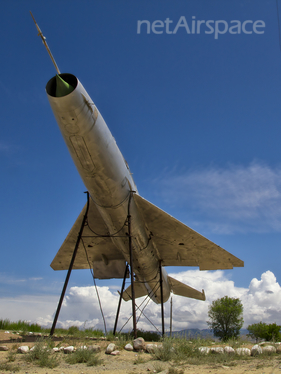As some of you may have read on Facebook, I just returned from a journey to Kyrgyzstan. Along with a friend from Kazakhstan, I drove from Almaty via Charyn, Karkara (border crossing Kazakhstan-Kyrgyzstan) and Karakol to Tamga, a small village on the southern shore of Issyk-Kul lake.
Issyk-Kul is the second-largest mountain lake in the world, after Lake Titicaca. It is located at 1600m altitude, and surrounded by mountains that reach 5000m and above.
It is one of the most breathtaking landscapes in the world. Below are a few impressions from my trip:

Passing Charyn canyon (KZ) on the way to Kyrgyzstan.

Getting closer to the Kyrgyz border. The last miles were off-road. Surprisingly, there still is a border crossing station in the middle of nowhere.

This is the Kyrgyz side of the border. The difference between both countries is staggering. Kazakhstan is quite well developed. The rural villages aren't anything fancy, but they still have electrical power, fresh water supply and other signs of civilization.
In rural Kyrgyzstan, people still live as nomads, without power or fresh water, herdings goats, cows and horses.
I knew that before, but seeing it was a bit of a culture shock at first.
The landscape is breathtakingly beautiful, though.

Approaching Issyk-Kul lake at dusk. When we arrived at Tamga village, it was already dark.

The next morning, we headed out to a nearby vantage point, to catch the first glimpse of the lake at daylight.

There was an old Soviet MiG-21 on static display there. The Soviet Air Force had given it to the village as a gift, to honor the first Kyrgyz fighter pilot in the Soviet Union, who had been from Tamga.

After that spotting excursion, we drove up Barskoon valley, taking a pass road to a high plateau. The road was in surprisingly good condition, as it is used to supply Kumtor mine, Kyrgyzstan's only gold mine, that is located on said plateau.
The landscape up there is completely different, resembling the Arctic. The plateau is at 3700-3800m altitude.

In the background, you can see Kumtor mine. Essentially, they are just removing an entire glacier, and process gold from its remains. Quite a shame, from an ecological point of view.

On the other hand, they are not short on glaciers up there. And when the sun came out, the contrasts between rock, snow, sky and clouds almost blinded me.
The highest pass road was at about 4050m altitude, and from there you could access peaks and vantage points that got close to 4200m.

Spending time at over 4000m has quite an impact on your body, so we eventually headed down towards Barskoon valley again, stopping at the river every now and then.

Being exhausted from the high altitude adventure, we decided to go to the lake for a swim. The water was ice cold, but the backdrop certainly made up for it. If only that ugly dude hadn't photobombed the scenery, ruining it all.


Without me in the way, it certainly looks a lot better.

The next day, we went to the neighbouring valley. It's just 10 km away, but looks quite different from Barskoon valley.


There are a few hot springs up there, where you can swim in hot, sulphurous water. And by "hot" I mean searingly hot. Thankfully, there's a creek right next to it, that springs from a glacier further up the valley. Perfect to cool down when the hot spring water gets too hot. And by "cool down" I mean freeze to death.
The experience made Finnish saunas look extremely tame in comparison.

Later on, it was time to head back to Kazakhstan already - business was calling. Again, just a few more miles down the road, the landscape looked differently again. Along with the sky, it was another breathtaking view.

After having passed the border back into Kazakhstan, we drove back through Charyn canyon just as the sun began to set. Perfect light for a perfect ending of a short, but epic road trip.
These are just a few photos, There's more where these came from, maybe I'll post a few more later on, but these should give a good impression on how spectacular the landscape is in that region.
I will most definitely go there again.
Ideology: The mistaken belief that your beliefs are neither beliefs nor mistaken.



















